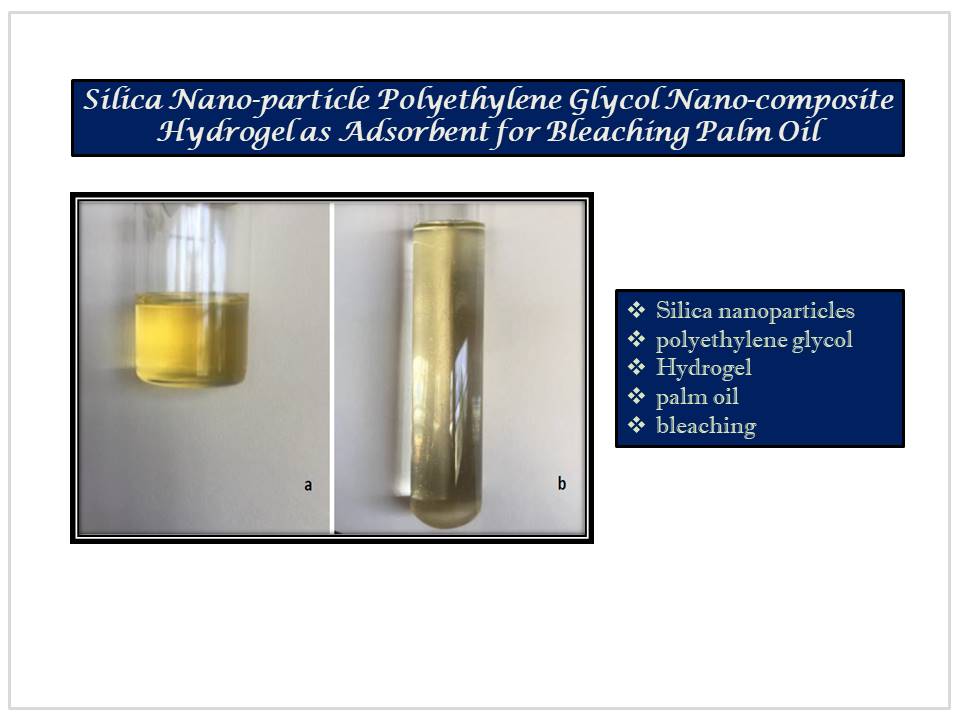Chemical Science & Engineering Research
Title
Silica Nano-particle Polyethylene Glycol Nano-composite Hydrogel as Adsorbent for Bleaching Palm Oil
Authors
Orlando Ketebu,* Yousuo Digieneni and Edubamou Restore Jones
Department of Chemical Engineering, Niger Delta University, Wilberforce Island Amassoma, Nigeria.
*Corresponding author E-mail address: orlandok2@yahoo.co (Orlando Ketebu)
Article History
Publication details: Received: 14th December 2022; Revised: 11th March 2023; Accepted: 11th March 2023; Published: 29th March 2023
Cite this article
Ketebu O.; Digieneni Y.; Jones E.R. Silica Nano-particle Polyethylene Glycol Nano-composite Hydrogel as Adsorbent for Bleaching Palm Oil. Chem. Sci. Eng. Res., 2023, 5(12), 14-17.

Abstract
Bleaching vegetable oil is one of the ways of removing impurities and pigments in oil for industrial and domestic applications. It is an adsorption process where the particles clog on the adsorbent surface. This work looks at bleaching Palm Oil using Silica Nanoparticle (SiO2 Nps) approximately 5 nm in size mixed with Polyethylene Glycol (PEG) to form SiO2 Nps-PEG hydrogel nanocomposite. From the experiment, the diffraction peaks 102, 200, 101, 101, 212, 301, 110, 211, and 123 at Braggs angle 15o, 17o, 21o, 23o, 26o, 27o, 36o, 39o and 43o from X-ray diffraction (XRD) analysis, shows that amorphous SiO2 was formed and peak M specifies the presence of PEG in the SiO2 Nps-PEG nanocomposite hydrogel. Scanning Electron Microscope (SEM) analysis showed a well dispersed SiO2 in the SiO2 Nps-PEG hydrogel nanocomposite compared to aggregated SiO2 Nps without PEG. The SiO2 Nps-PEG hydrogel effectively bleached raw palm oil indicated by an increase in fatty acids from 86.6% in the unbleached oil to 97.1% in the bleached oil; increase in the aldehydes from 0.67% in the unbleached oil to 0.9% in the bleached oil; decrease in alkanones from 2.79% in the unbleached oil to 0.94% in the bleached oil; decrease in other organics from 9.38% in the unbleached oil to 0.48% in the bleached oil and finally alkene increase from 0.21% to 0.34% as obtained from the Gas Chromatography/Mass Spectrometry (GCMS) analysis. This shows that the SiO2 Nps-PEG nanocomposite hydrogel is an effective agent in bleaching palm oil.
Keywords
Silica nanoparticles; polyethylene glycol; hydrogel; palm oil; bleaching